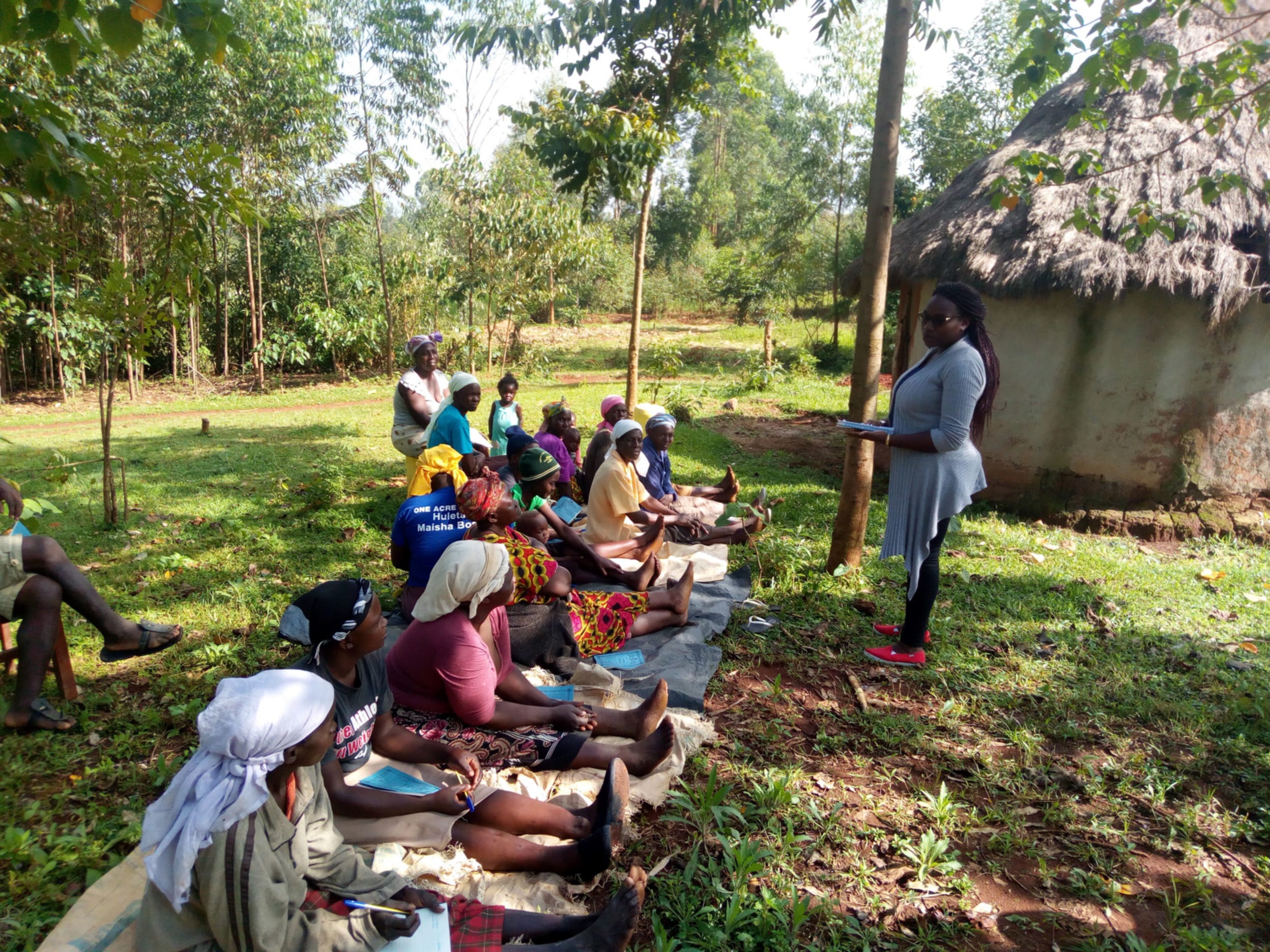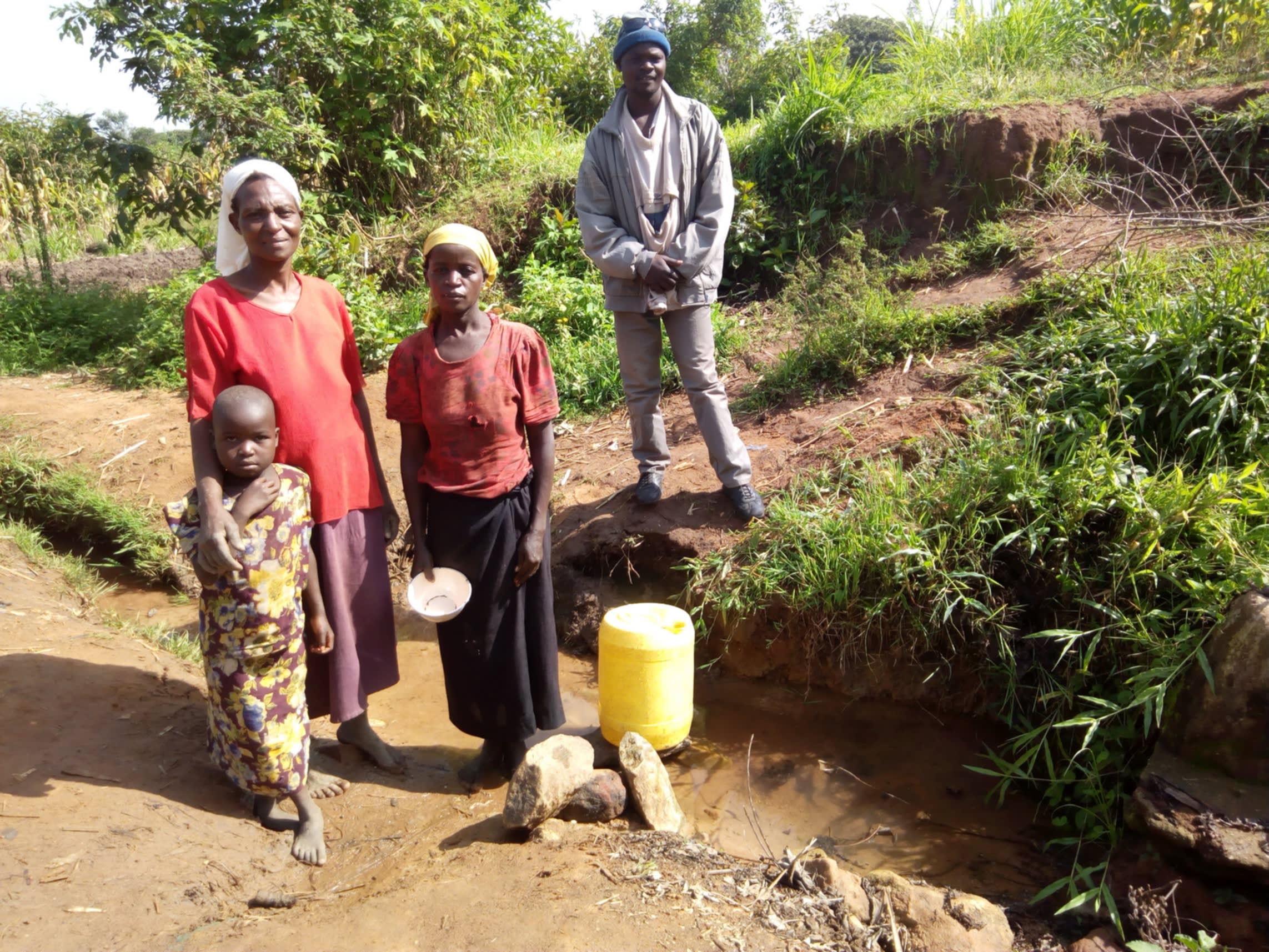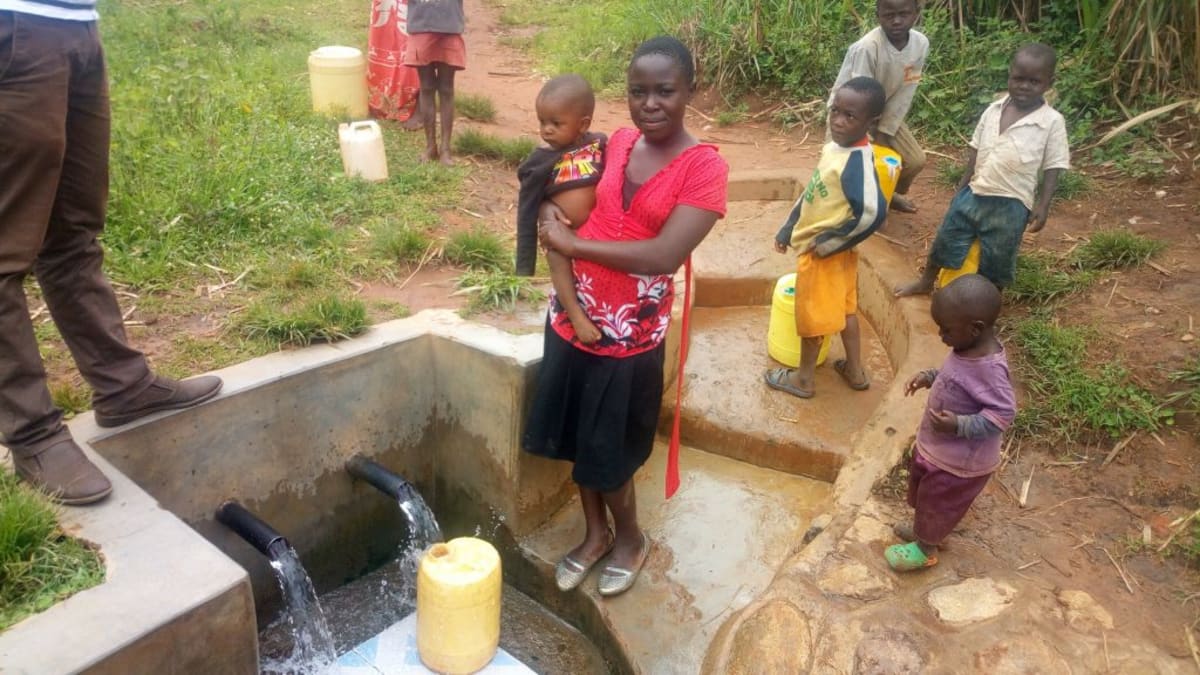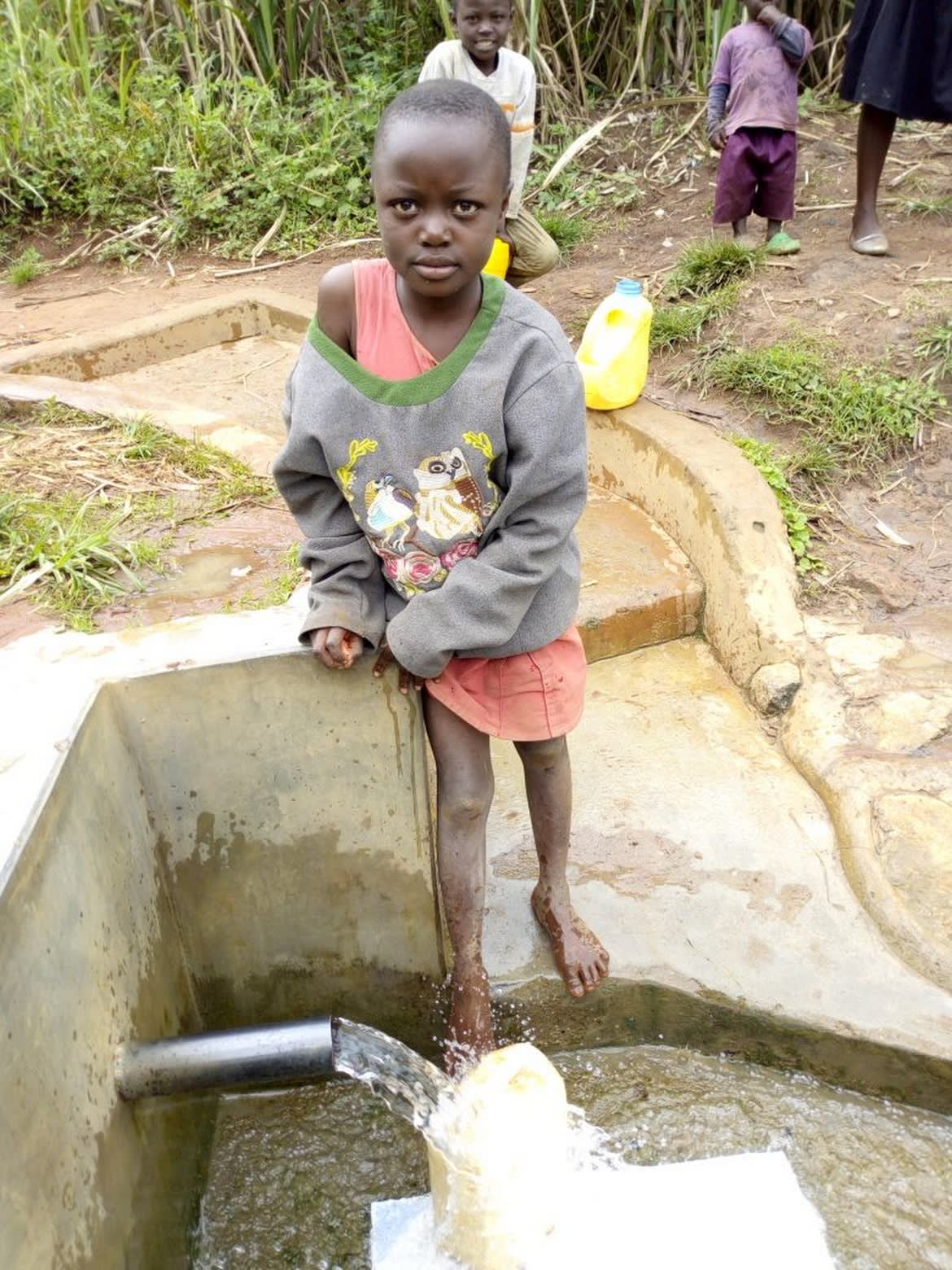This project is a part of our shared program with Western Water and Sanitation Forum (WEWASAFO). Our team is pleased to directly share the below report (edited for clarity, as needed).
Welcome to the Community
Each day in Timbito Community starts with people waking up at 5 am. That's when men go milk their cows while women start breakfast and household cleaning. They then prepare children for school, and after they've sent them off they head to the farm. Most adults here are either farmers, casual laborers, or motorbike operators (they taxi others around). Every day is consumed with looking for enough money to bring food home for their families. The days normally ends at 8 pm after dinner, since there is no electricity in most homes. Paraffin is quite expensive for these families, so they prefer not to use it unless there is an emergency.
Water Situation
Atechere Spring is one of the main water sources in Timbito Community. The women in this community reported that they really need assistance getting clean water; they have suffered for a very long time, and some come from very far away to fetch water which happens to also be very dirty.
This spring is completely vulnerable to contamination. Rainy weather yields the worst water quality; rainwater washes all sorts of dirt, feces, and chemicals into the water. Community members admit that they often suffer from typhoid because they have to drink water from Atechere Spring.
Though a lot of children are getting clean water while at school through successful water projects, it doesn't do much good when they return home to dirty water. Classes are missed and studies negatively impacted as these students suffer from waterborne disease.
Sanitation Situation
There are still quite a few households who don't have pit latrines. While some people share sanitation facilities with their neighbors, others reportedly opt for open defecation; this was exposing the entire community to fecal-oral diseases. If latrines are old, dirty, or poorly built, using the bushes as a bathroom often seems the safer option. Most of the latrines are traditionally built using thatched sticks filled in with mud.
Though Timbito is quite ahead of other communities when it comes to sanitation facilities; the majority of households have and use clotheslines and dish racks. A percentage of these same households also have hand-washing stations.
Mr. Festus Ombio said, "We try to keep our environment clean with continuous failure basically due to lack of latrines which encourages people to ease themselves in the bushes, this is a huge challenge, the women here also are not educated on health-related issues, we live by the grace of God because we lack knowledge on proper standards of health. The children often get ill, out of the water they drink directly from the spring that has not been treated, it is hard to watch over them the whole day especially when they head out to play."
Plans: Hygiene and Sanitation Training
Community members will attend hygiene and sanitation training for at least two days. This training will ensure participants are no longer ignorant about healthy practices and their importance. The facilitator plans to use PHAST (Participatory Hygiene and Sanitation Transformation), CLTS (Community-Led Total Sanitation), ABCD (Asset-Based Community Development), group discussions, handouts, and demonstrations at the spring. One of the most important topics we plan to cover is open defecation and its dangers, as well as having and using a pit latrine.
Training will also result in the formation of a committee that will oversee operations and maintenance at the spring. They will enforce proper behavior around the spring and delegate tasks that will help preserve the site, such as building a fence and digging proper drainage. The fence will keep out destructive animals, and the drainage will keep the area’s mosquito population at a minimum.
Plans: Sanitation Platforms
On the final day of training, participants will select five families that should benefit from new latrine floors.
Training will also inform the community and selected families on what they need to contribute to make this project a success. They must mobilize locally available materials, such as bricks, clean sand, hardcore, and ballast. The five families chosen for sanitation platforms must prepare by sinking a pit for the sanitation platforms to be placed over. All community members must work together to make sure that accommodations and food are always provided for the work teams.
Plans: Spring Protection
Fetching water is predominantly a female role, done by both women and young girls. Protecting the spring and offering training and support will therefore help empower the female members of the community by giving them more time and efforts to engage and invest in income-generating activities.
In addition, protecting the spring will ensure that the water is safe, adequate and secure. Construction will keep surface runoff and other contaminants out of the water.

 Protected Spring
Protected Spring
 Rehabilitation Project
Rehabilitation Project































